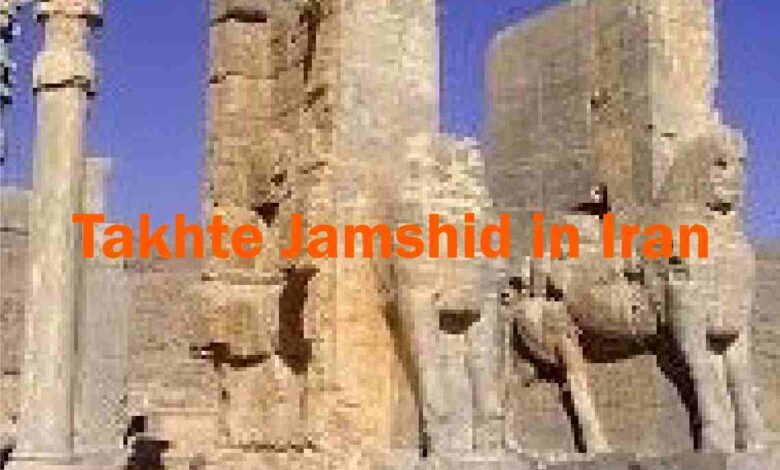Takhte Jamshid in Iran: The Comprehensive Guide

Introduction to Takhte Jamshid in Iran
Nestled in the heart of Iran’s Fars Province, takhte jamshid in iran, also known as Persepolis, stands as one of the most extraordinary remnants of the ancient world. This site, once the ceremonial capital of the Achaemenid Empire, is a testament to the architectural and cultural grandeur that defined ancient Persia. Recognized as a UNESCO World Heritage Site since 1979, Takhte Jamshid offers a glimpse into a civilization that flourished over 2,500 years ago, showcasing its sophisticated artistry, engineering prowess, and the rich history that has captivated historians and travelers alike.
Historical Significance
Darius I established Takhte Jamshid, or the “Throne of Jamshid,” in 518 BC. The site was linked to Pasargadae as its neutral name suggests, located near the Kuh-e Rahmat (Mountain of Mercy), named for both its ceremonial significance and as a reflection of Persian Achaemenid Empire power symbolism. Persepolis was an opulent display for the empire, primarily serving as a place to hold ceremonial functions like Nowruz, the Persian New Year. It wasn’t the largest city, but as a ceremonial complex, it was central to the empire’s cultural and governmental life.
Construction of Persepolis continued under multiple kings, with Xerxes I and Artaxerxes adding their contributions. However, the city’s fortune was short-lived. In 330 BCE, Alexander the Great entered Persepolis and burned it, presumably as an act of vengeance for an ancient grudge dating back to the Persian invasions of Greece.
Architectural Marvels of Takhte Jamshid
Mesopotamian motives inspired the specific architectural design of Persepolis, which they also completed with typical Persian features. The zone, located on an enormous terrace — half natural; the other man-made) houses a collection of majestic palaces, audience halls, and temples.
The Apadana Palace
People consider the Apadana Palace to be the most important building among those in Persepolis. Darius I began the palace, and Xerxes I finished it — the king conducted audiences there. It contained a huge audience hall with 72 towering columns, each over 24 metres tall, and covered in details of the empire’s subjects bringing gifts to their king. These reliefs functioned as powerful symbols to show the power and unity inherent in a sprawling empire like that of the Achaemenids, going beyond pure ornamentation.
The Gate of All Nations
Xerxes I also built the Gate of Coming in, a monumental entrance meant to intimidate visitors from around the empire. Massive statues of beasts from mythology stand as guards outside the gate, a sign of both power and divine intervention in this empire. There are inscriptions on the Gate (in Old-Persian, Elamite and Babylonian) that is why it proved to be a veritable concoction of cultures.
The Hall of a Hundred Columns
Another magnificent structure is the Hall of a Hundred Columns, or Throne Hall. Such a building was the largest hall in Persepolis and probably served as royal receptions. It is the hall’s impressive size, capable of holding a thousand people and decorated with carved scenes showing the king performing ceremonial duties that has stood for centuries as the centerpiece in Persepolis.
The Art and Symbolism of Reliefs
The reliefs at Takhte Jamshid Elaborate relief carvings illustrate the story of the Achaemenid Empire with images of royal audiences, processions, and ceremonial displays. The most notable of these are the Apadana Staircase, which depicts delegates from 23 nations bringing gifts to the Persian king. Above all, however, this emphasizes the wider cultural diversity of the empire and underscores very strongly that even if you are faced with a far-reaching domain where numerous languages were spoken then it is expected for king to be seen as unifying figure throughout in which ever part.
The Fall and Legacy of Persepolis
After this fall, the end of Achaemenid domination began. Alexander the Great destroyed the city, leaving it in ruins. Yet, the memory of Persepolis was long-lasting, both in the historical mind of Persian people and particularly among historians. They forgot the largest and then rediscovered it in the 20th century, revealing that people also associated many important archaeological finds with other temples.
Visiting Takhte Jamshid Today
For modern visitors, Takhte Jamshid is a must-see destination that offers a window into the past. The site is located about 70 kilometers northeast of Shiraz, making it easily accessible for those staying in the city. The best time to visit is during the cooler months, from September to April, as the heat during the summer can be overwhelming.
When planning a visit, it’s advisable to allocate several hours to explore the site fully. Key areas to visit include the Apadana Palace, the Gate of All Nations, and the Hall of a Hundred Columns, among others. Additionally, the nearby sites of Naqsh-e Rostam, which houses the tombs of Achaemenid kings, and Pasargadae, the tomb of Cyrus the Great, can be combined into a single-day trip for a comprehensive exploration of ancient Persian history.
Practical Tips for Visitors of Takhte Jamshid in Iran
Timing: The best time to visit is early in the morning or late in the afternoon to avoid the midday heat.
What to Bring: Comfortable walking shoes, a hat, and plenty of water are essential. The site is expansive and involves a lot of walking.
Guided Tours: Hiring a local guide can enhance your visit by providing deeper insights into the history and significance of the ruins.
Cultural Sensitivity: Remember that Takhte Jamshid is a site of great historical and cultural significance to Iranians, so it’s important to treat it with respect.
The Bottom Line
Takhte jamshid in iran is more than just an archeological site; it represents the cultural values of Iran and the grandeur of the Achaemenid Empire. It is an unforgettable experience for anyone interested in history, or architecture, or those who travel out of curiosity to discover the past directly: a trip to Takht Jamshid will make you feel vividly alive in that ancient era.





